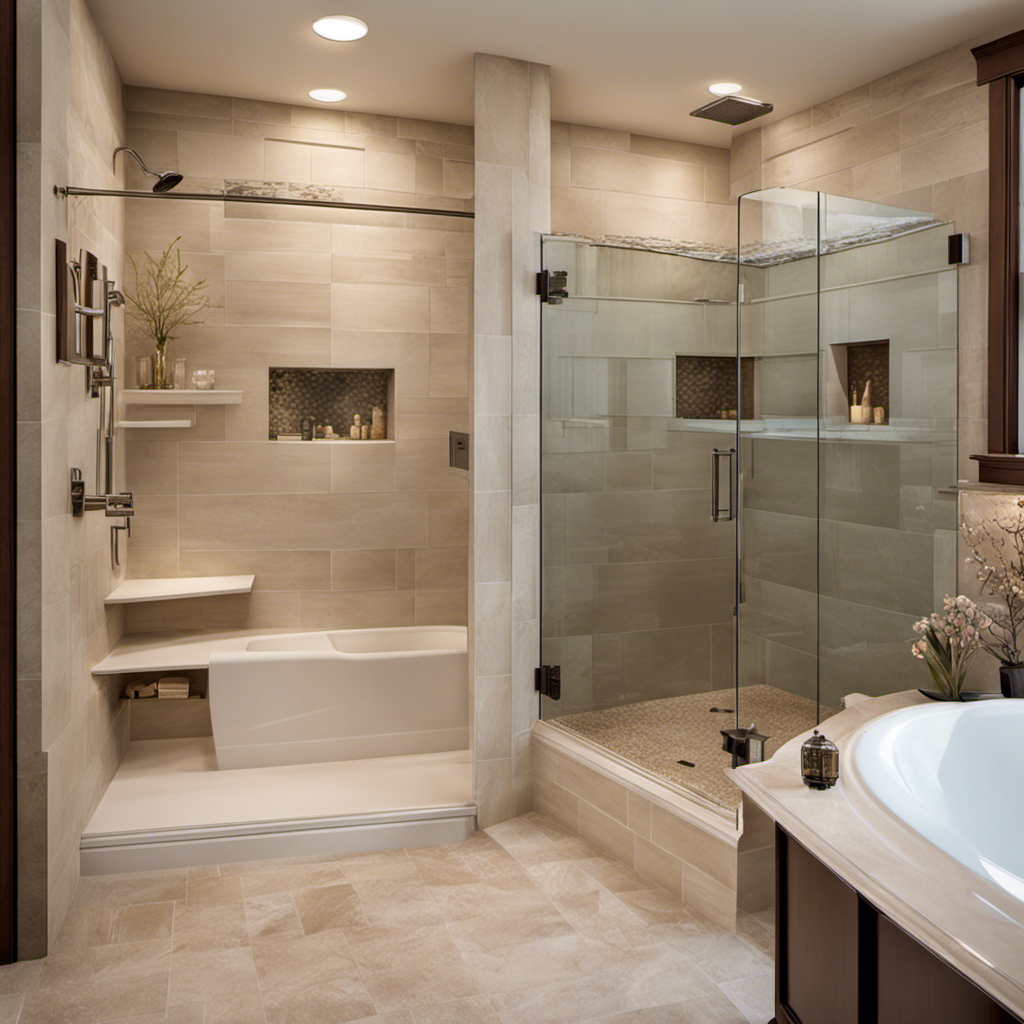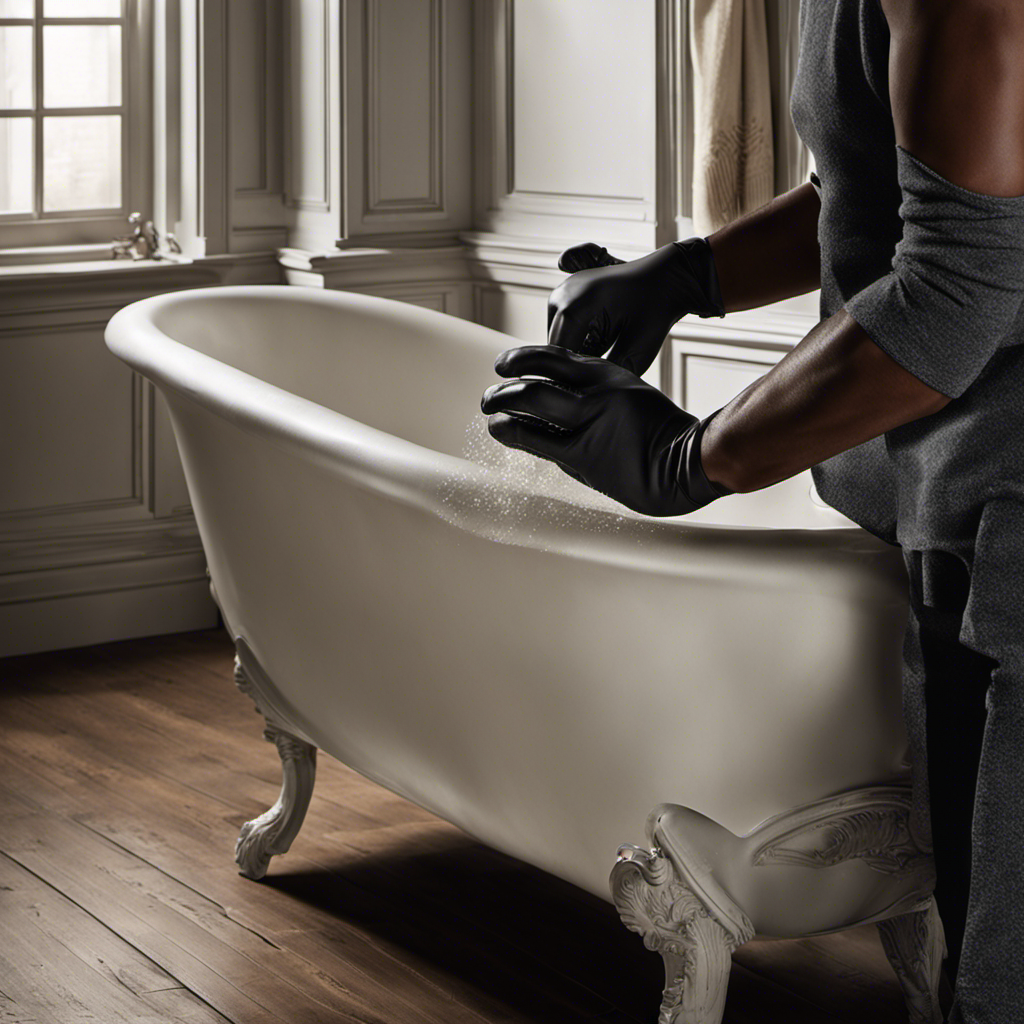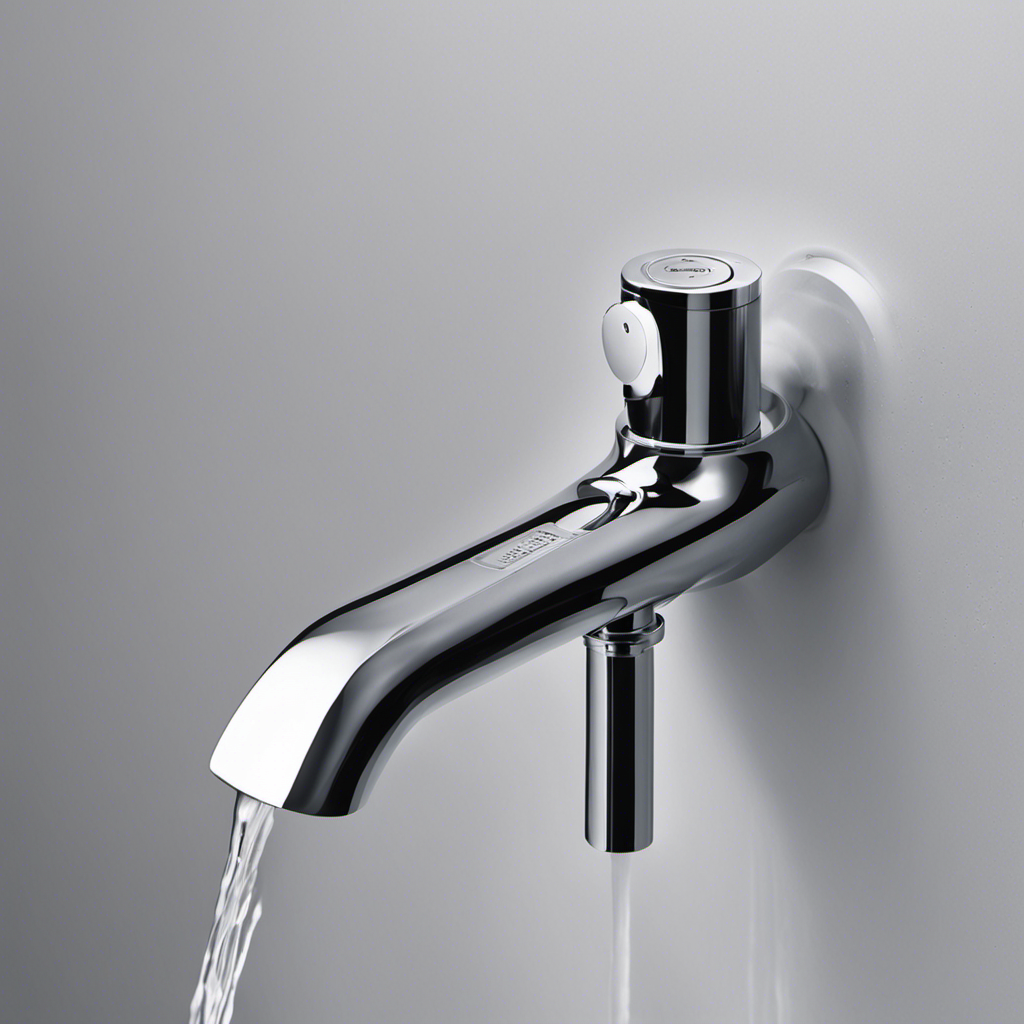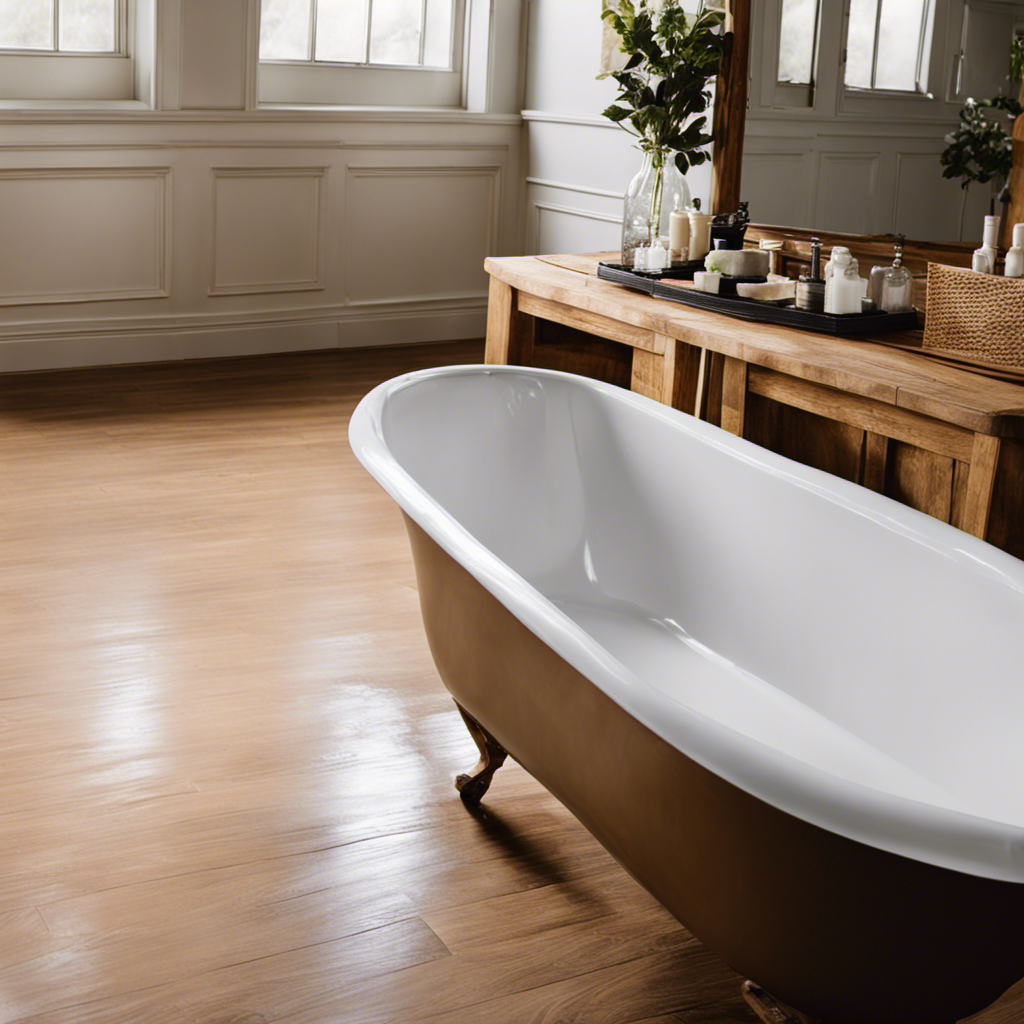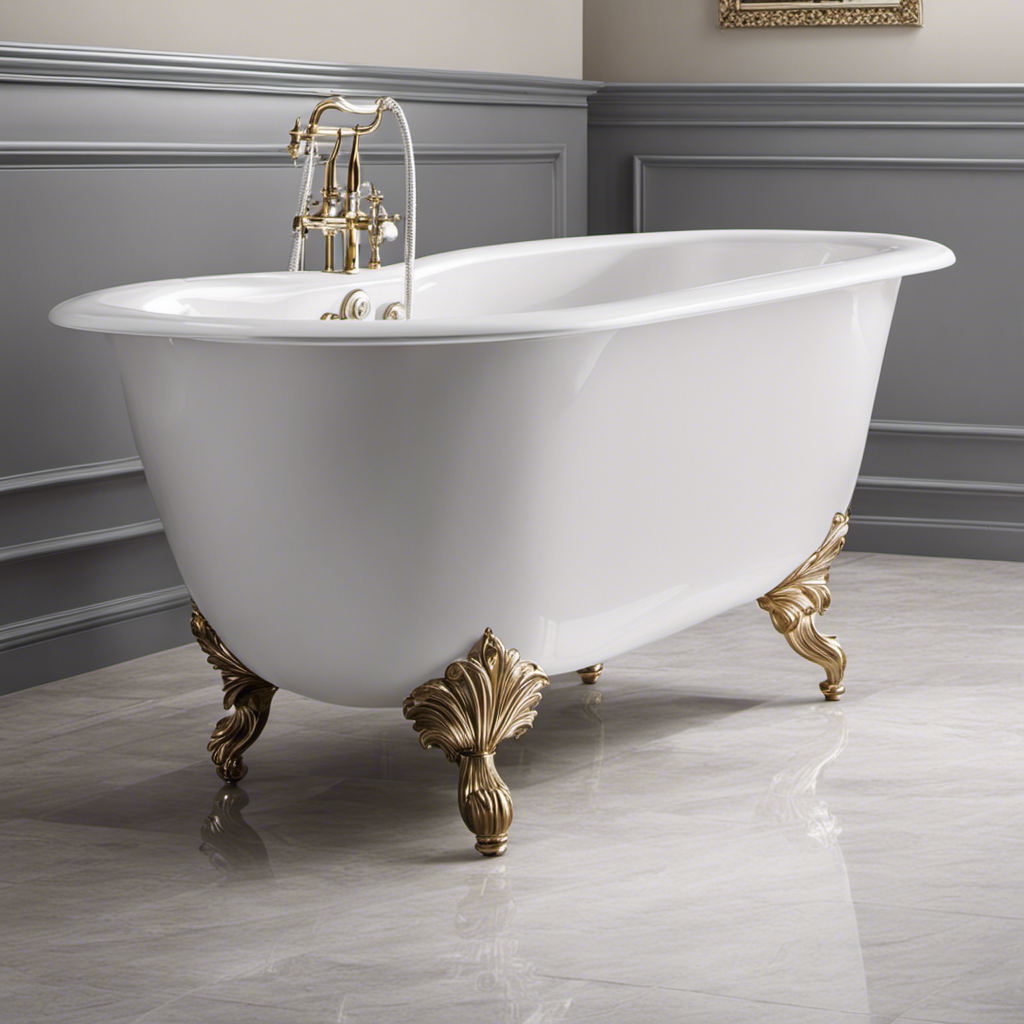I’ve always dreamed of having a luxurious shower instead of a cramped bathtub. And guess what? I finally made it happen!
In this step-by-step guide, I’ll walk you through the process of changing your bathtub to a shower.
We’ll assess the space and plumbing, remove the bathtub, prepare the shower area, install the shower base and walls, and add those finishing touches.
Get ready to transform your bathroom into a relaxing oasis – let’s get started!
Key Takeaways
- Assess the space and plumbing before starting the bathtub to shower conversion.
- Remove the bathtub carefully by disconnecting supply lines and drain pipe and loosening screws or nails securing it to the wall.
- Prepare the shower area by removing surrounding tiles or walls, applying a waterproofing membrane or sealant, and choosing suitable shower fixtures.
- Install the shower base and walls using mortar or adhesive and materials like acrylic, fiberglass, or tile.
Assessing the Space and Plumbing
Before you start, make sure to assess the space and plumbing to determine if converting your bathtub to a shower is feasible.
First, measure the dimensions of your bathroom to ensure that there is enough space for a shower. Consider the length, width, and height available.
Next, assess the plumbing situation. Check if there are existing water supply lines and drainage for a shower. If not, you may need to hire a plumber to install the necessary connections.
Once you have determined that the space and plumbing are suitable, it’s time to choose the right shower fixtures. Consider factors such as the style, functionality, and water-saving features. Look for showerheads, faucets, and controls that fit your preferences and budget.
Remember to also consider any additional features you may want, such as handrails or built-in seating.
Removing the Bathtub
Once you’ve got all the necessary tools, you can start by disconnecting the plumbing fixtures. This step is crucial in the bathtub removal process of a bathroom renovation.
First, turn off the water supply to the bathroom and make sure the area is dry. Then, using a wrench, loosen the nuts that connect the supply lines to the faucet and the drain pipe. Once the plumbing fixtures are disconnected, you can proceed with removing the bathtub.
This can be done by following these steps:
- Remove the bathtub surround or tile.
- Disconnect the drain pipe.
- Disconnect the overflow drain.
- Loosen the screws or nails securing the bathtub to the wall.
- Carefully lift and remove the bathtub.
By removing the bathtub, you create space for the new shower area.
Now, let’s move on to preparing the shower area.
Preparing the Shower Area
After disconnecting the plumbing fixtures, it’s time to prepare the shower area for the renovation. Here’s what you need to do:
-
Remove the bathtub: Start by removing the bathtub and any surrounding tiles or walls. Use a pry bar and hammer to carefully detach the tub from the walls and floor. Dispose of the tub responsibly.
-
Waterproof the walls and floor: Apply a waterproofing membrane or sealant to the walls and floor to prevent water damage. Make sure to cover the entire surface area and follow the manufacturer’s instructions for application.
-
Choose the right shower fixtures: Consider the style and functionality of the shower fixtures you want to install. Decide on the type of showerhead, valve, and handle that best suit your needs and bathroom design. Take into account factors such as water pressure, ease of use, and durability.
Installing the Shower Base and Walls
To properly install the shower base and walls, you’ll need to ensure that they are level and secure. Here are some shower base installation tips and advice for choosing the right shower wall materials.
-
Start by measuring the shower area and purchasing a shower base that fits your space. Make sure to choose a base that’s sturdy and durable.
-
Before installing the shower base, check the floor for any unevenness. Use a level to ensure that the area is flat and even.
-
Apply a layer of mortar or adhesive to the floor before placing the shower base. This’ll help secure it in place and prevent any movement or leaks.
-
Once the shower base is securely in place, it’s time to install the shower walls. Consider using materials like acrylic, fiberglass, or tile for the walls. These materials’re waterproof and easy to clean.
-
Make sure to follow the manufacturer’s instructions for installing the shower walls and use the appropriate tools and materials.
Finishing Touches and Final Steps
Now that the shower base and walls are securely installed, it’s time to focus on the finishing touches and final steps. Here’s what you need to do:
-
Choosing Shower Fixtures:
- Consider the style and functionality you want for your shower.
- Look for fixtures that match the overall design of your bathroom.
- Pay attention to the quality and durability of the fixtures to ensure they last.
-
Selecting Shower Curtains:
- Measure the length and width of your shower area to determine the right size curtain.
- Decide on the type of curtain you prefer, such as fabric or vinyl.
- Look for curtains that are waterproof and easy to clean.
Frequently Asked Questions
How Much Does It Typically Cost to Change a Bathtub to a Shower?
Typically, it costs around $3,000 to $5,000 to change a bathtub to a shower. This cost includes materials, labor, and any necessary plumbing modifications. The bathtub to shower conversion process involves removing the bathtub, installing a shower pan, and adding new fixtures.
Can I Change a Bathtub to a Shower if I Have a Small Bathroom?
In a small bathroom, changing bathtub fixtures to a shower is possible. The benefits of a shower over a bathtub include saving space and conserving water. Here’s how you can make the switch.
Do I Need a Professional Plumber to Change a Bathtub to a Shower?
I don’t need a professional plumber for a bathtub conversion. It can be done DIY with proper research and tools. First, remove the bathtub, then install the shower base, plumbing fixtures, and tile.
What Are the Different Types of Shower Bases Available for Installation?
There are several types of shower bases available for installation. They include acrylic, fiberglass, and tile. Acrylic bases are durable and easy to clean, while fiberglass is affordable but can crack. Tile bases offer customizable designs but require more maintenance.
How Long Does It Take to Complete the Bathtub to Shower Conversion Process?
Changing a bathtub to a shower can be a time-consuming process, but with some time-saving tips, it can be done efficiently. Whether you choose a DIY approach or hire professionals, the conversion process can take anywhere from a few days to a week.
Conclusion
Well, folks, we’ve reached the end of our journey on transforming that old bathtub into a shiny new shower.
It’s been quite the adventure, hasn’t it? From assessing the space and plumbing to removing the bathtub, preparing the shower area, and installing the shower base and walls, we’ve covered it all.
And let’s not forget those finishing touches and final steps that really bring the whole project together.
So, grab your tool belt and get ready to dive into the world of shower transformations.
Happy showering, my friends!
